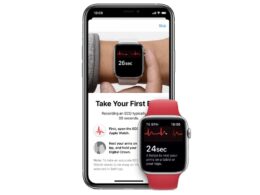health transformation institute (HTI)
the most comprehensive knowledge portal, for health transformation
Joaquim Cardoso MSc*
Founder, Chief Researcher and Editor
November 28, 2022
MSc* from London Business School — MIT Sloan Masters Program
This is a republication of the article “November is for Diabetes Awareness — Fitbit Health Solutions”, with the title above.
Fitbit Health Solutions (by Google)
November 24, 2022
Today marks the thirty-first annual World Diabetes Day.
The tradition was started to bring awareness to the growing health threat of diabetes. 1World Diabetes Day was adopted as an official observance by the United Nations in 2006.
The theme for this year’s campaign is “Access to Diabetes Care,” recognizing that much of the world’s population cannot access enough diabetes testing supplies or treatments, or receive adequate professional care.
In the United States, the American Diabetes Association has declared November American Diabetes Month, with the theme “Today’s Diabetes Hits Different.”
It acknowledges that people with diabetes face new health risks and challenges, but there are also new technologies and resources, as well as community support.
The ADA has scheduled peer-led online events throughout the month.
According to the IDF Diabetes Atlas, compiled by the International Diabetes Federation, 1 in 10 adults is currently living with diabetes, but almost half of them (44 percent) have not been diagnosed. Most of these people have type 2 diabetes.
…1 in 10 adults is currently living with diabetes, but almost half of them (44 percent) have not been diagnosed. Most of these people have type 2 diabetes.
These additional statistics convey the scope of the condition worldwide:
- 537 million adults (1 in 10) were living with diabetes in 2021. This number is expected to rise to 643 million by 2030 and 783 million by 2045.
- More than 3 in 4 people with diabetes live in low and middle-income countries.
- 541 million adults have increased risk of developing type 2 diabetes.
- More than 1.2 million children and adolescents (infancy to 19 years) live with type 1 diabetes.
- Diabetes caused 6.7 million deaths in 2021.
- Diabetes was responsible for at least $966 billion in health spending in 2021–9% of the worldwide total spent on healthcare.
- 21 million people — or 1 in 6 — who gave birth in 2021 had high blood sugar during pregnancy. Most of these people had gestational diabetes.2This can have lasting health effects for the birthing parent and the baby.3
Diabetes was responsible for at least $966 billion in health spending in 2021–9% of the worldwide total spent on healthcare.

While the growing prevalence of diabetes is concerning, progress is being made for those at risk or living with diabetes.
Thanks to new digital health technologies for delivering treatments and monitoring blood sugar, diabetes is more manageable than ever before. In addition, prediabetes and type 2 diabetes are highly manageable with diet and exercise.
While the growing prevalence of diabetes is concerning, progress is being made for those at risk or living with diabetes.
Thanks to new digital health technologies for delivering treatments and monitoring blood sugar, diabetes is more manageable than ever before.
In addition, prediabetes and type 2 diabetes are highly manageable with diet and exercise.

Understanding the Role of Physical Activity
One recent study from the All of Us research program, an initiative by the National Institutes of Health, shows a direct connection between daily physical activity and lower rates of chronic illness, including type 2 diabetes.
In one of the largest studies of its kind, with more than 6,000 participants for an average of four years, the All of Us researchers examined the associations between physical activity over time and rates of chronic conditions.
It found that increased daily step counts are associated with a significant reduction in the incidence of many chronic diseases including type 2 diabetes, sleep apnea, obstructive sleep apnea, obesity, major depressive disorder, GERD, essential hypertension and other conditions.
More specifically, the researchers found that with each increase of 1,000 steps in average daily step count, the risk of type 2 diabetes went down by more than 25%.
One recent study from the All of Us research program, an initiative by the National Institutes of Health, shows a direct connection between daily physical activity and lower rates of chronic illness, including type 2 diabetes.
More specifically, the researchers found that with each increase of 1,000 steps in average daily step count, the risk of type 2 diabetes went down by more than 25%.

Diabetes Prevention and Management
Other research data confirms these findings.
Studies from around the world have demonstrated that lifestyle factors can help prevent the development of diabetes, and help people stay healthy after a diabetes diagnosis.
For example, the Diabetes Prevention Program study, conducted by the U.S. Centers for Disease Control, found that lifestyle changes were more effective at preventing type 2 diabetes than treatment with a standard diabetes medicine.
Studies from around the world have demonstrated that lifestyle factors can help prevent the development of diabetes, and help people stay healthy after a diabetes diagnosis.
Regular physical activity and a consistently healthy diet can help prevent prediabetes from progressing to diabetes.
And being active helps people with diabetes control their blood sugar levels and lowers the risk of heart disease and nerve damage.
Much of diabetes management is self-care, with the support and under the supervision of a diabetes care team.
Fitbit can be a powerful tool to help people make the lifestyle choices every day that keep blood sugar at prediabetes levels or, with type 1 or type 2 diabetes, help people be their healthiest.
Much of diabetes management is self-care, with the support and under the supervision of a diabetes care team.

Supporting Diabetes Care with Fitbit
That’s why many diabetes management programs, like Solera Health, incorporate Fitbit.
In addition to activity tracking, people can use the Fitbit app to track food and water intake, sleep amount and quality, and whether they have moved within an hour.
Users of OneTouch Verio® blood sugar monitors can sync blood sugar readings from the OneTouch Reveal® app to Fitbit, so they can look at all of their health information within the familiar Fitbit interface.
Behavior support systems, like those leveraging Fitbit devices, are an important component of diabetes prevention.
We know more today about how to prevent and control diabetes effectively, including making better lifestyle choices.
In fact, prediabetes and type 2 diabetes are largely preventable: about 9 in 10 cases in the U.S. can be avoided by making lifestyle changes.
In fact, prediabetes and type 2 diabetes are largely preventable: about 9 in 10 cases in the U.S. can be avoided by making lifestyle changes.

Looking to the Future
To support even more intuitive solutions that empower people with prediabetes and diabetes, Fitbit intends to continue growing our network of partners.
These solutions, along with a deeper understanding of the relationship between physical activity and diabetes, will help all of us make forward progress in diabetes prevention, care, and management.
1https://diabetes.org/get-involved/community/american-diabetes-month
2https://www.idf.org/our-activities/care-prevention/gdm
3https://diabetesatlas.org/data/en/world/
Originally published at https://healthsolutions.fitbit.com on November 14, 2022.












